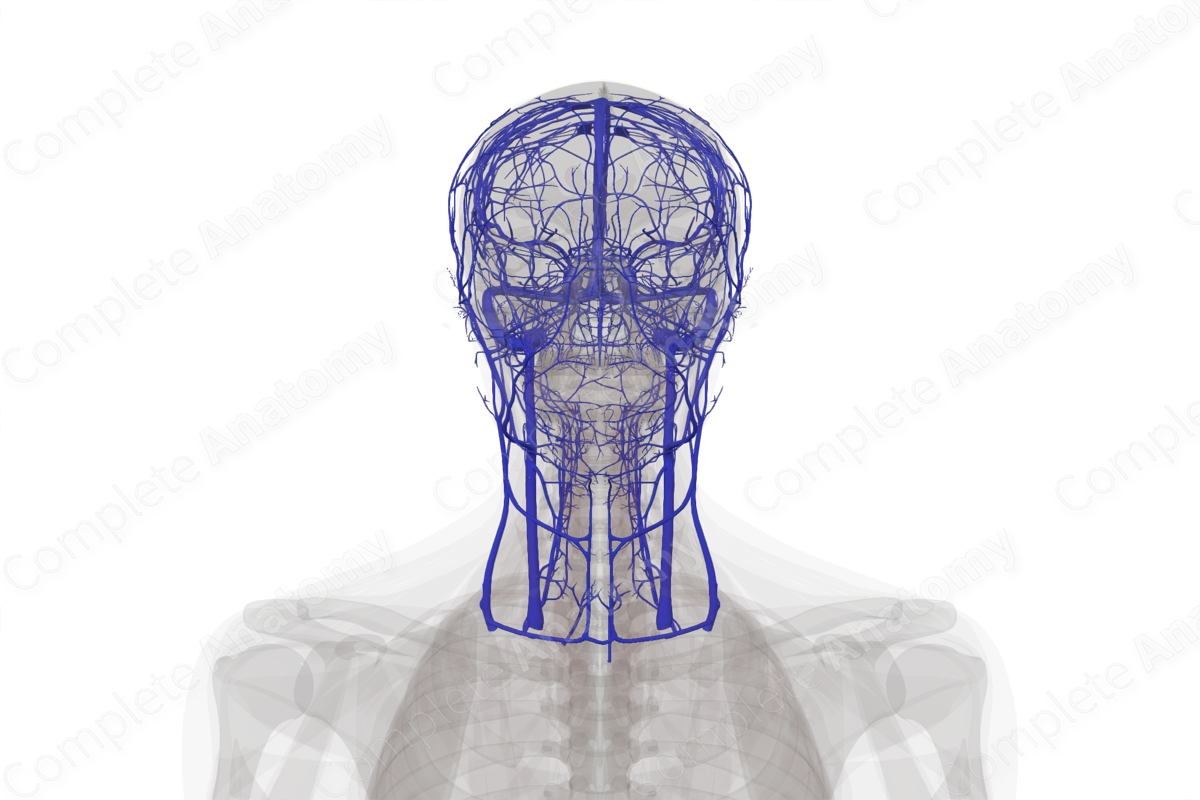
Description
The head and neck are highly vascularized region. Its many small veins drain into three major veins, the internal jugular, the external jugular, and the vertebral veins.
The brain and the meninges are drained through a network of venous sinuses, which eventually return venous blood to the sigmoid sinus. This sinus continues as the internal jugular vein upon its exit from the base of the skull (via the jugular foramen). In the neck, the vein descends within the carotid sheath. At the root of the neck, the internal jugular vein joins the subclavian vein to form the brachiocephalic vein.
The external jugular vein receives tributaries which supply the face and regions of the neck. It is formed by the union of posterior auricular and retromandibular veins. The former drains the scalp behind the external ear, while the latter drains the face. After its formation, the external jugular vein descends in the neck. It crosses over the sternocleidomastoid muscle to reach the root of the neck where it drains into the subclavian vein.
The vertebral vein receives tributaries from the posterior skull, regions of the neck, and the spinal cord. It descends in the neck by passing through the foramina transversarium of the transverse processes of the first to sixth cervical vertebrae. At the root of the neck, the vertebral vein emerges from the foramen transversarium of the sixth cervical vertebra and finally drains into the subclavian or the brachiocephalic vein.
Related parts of the anatomy
Learn more about this topic from other Elsevier products
Vein

A venous sinus is a vein with a thin wall of endothelium that is devoid of smooth muscle to regulate its diameter.




